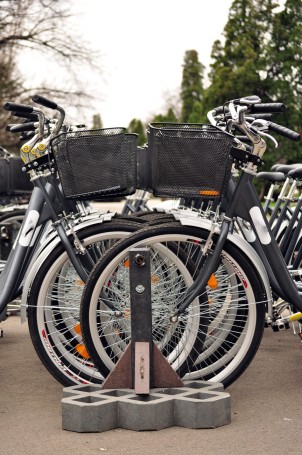
The current trend towards obesity, if left unchecked, may become one of the biggest problems facing societies going forward into the 21st century. Globally, obesity rates have doubled since 1980.
This problem is no longer the sole province of wealthy nations. As developing countries begin to adopt the same habits as their more developed counterparts, the problem of obesity is increasing there as well.
Since obesity is associated with a number of health problems including cardiovascular disease, certain types of cancer and diabetes, it will result in increased health care costs and may result in increased mortality. The cost to society will be enormous.
Our modern lifestyles are primarily to blame for this trend. Most people consume large quantities of processed foods and fast food has found its way to many parts of the world. Couple this with a decrease in activity caused by modern technology and you have a recipe for disaster.
Widespread cardiovascular disease is the most likely consequence of obesity. If something is not done soon, many preventable deaths will occur.
Campaigns have been underway to educate the public about the health risks associated with obesity. While many people are receptive to messages about eating a healthy diet and exercising to lose weight (and avoid gaining it back), some people are resistant.
Heavy people often feel fine. Their cholesterol and blood sugar levels fall into the normal range. So they believe they can be healthy at what is considered an unhealthy weight.
They have a point: overweight individuals face discrimination in many facets of society. The media portrays heaviness as unattractive and unhealthy. Obesity is also perceived as gluttony, even though we know that some people are genetically predisposed to be heavier than others. Still we blame obese people for their condition, even if there is a genetic component to it.
Overeating is also common in Western countries. Portions are designed to fill one to the gills. And people often munch on foods such as potato chips and cookies. Such foods qualify as comfort foods. They are part of a common social ritual whereby people eat while doing something else, like watching TV.
So far, no solution beyond asking people to modify their food intake and be less inactive has been proposed. It’s all well and good to tell people to be more active. But, modern life doesn’t afford many opportunities for activity in daily life.
Preferred transportation in a modern world is door to door, which has made walking and public transportation obsolete. Part of this phenomenon can be attributed to laziness and part of it is time consumption. Our lives are busier today than the lives of people were thirty years ago. Shaving a few minutes off of a commute can mean more time to do something else. Therefore, we exchange time.
As far as a widespread solution goes, maybe introducing people to specific physical activities which can be incorporated into their day would make more sense than making vague recommendations of increasing physical activity. Left up to their own devices, most people will make few changes. They won’t know where to start.
Walking has been proposed as a simple way to get people moving. It is often recommended as a way to stay fit and to lose weight. However, normal walking doesn’t really burn very many calories.
Activity charts show that cycling at a moderate pace can burn twice as many calories as walking at a moderate pace. This means that the exerciser can burn more calories in the same amount of time, which is a plus for people who don’t like to exercise.
Riding a bike is also something that most people can do. Virtually everyone learns to ride when they are a kid. And riding a bike is more fun than walking, particularly when the walking is done as exercise and not to go somewhere.
In view of these positive benefits, a global initiative should be implemented to encourage people to ride bikes. The idea could be sold by pointing out that cycling would be a good way to combine the modern, car-centric concept of traveling door to door with burning excess calories.
That’s where the fat comes from — taking in more calories than are burned. As an added bonus, getting more people onto bikes will reduce traffic congestion and air pollution. Cleaner air also contributes to better health.
While cycling alone cannot completely cure the global obesity problem, it can make a dent in it by changing habits as well as lifestyle. If we are going to reverse the obesity trend, modern lifestyles must evolve into higher levels of activity and less ingestion of processed foods.
Reaching such a goal will be a monumental undertaking. Modern conveniences make life easier. Convincing people to make more effort in their daily lives will be the main challenge. However, as more people start succumbing to obesity related illnesses, fear may inspire people to live differently. Hopefully, this will happen before any significant loss of life occurs and before health care costs become unsustainable.



